
Bálsamo corporal: Shea's So Fine
- Out Of Stock




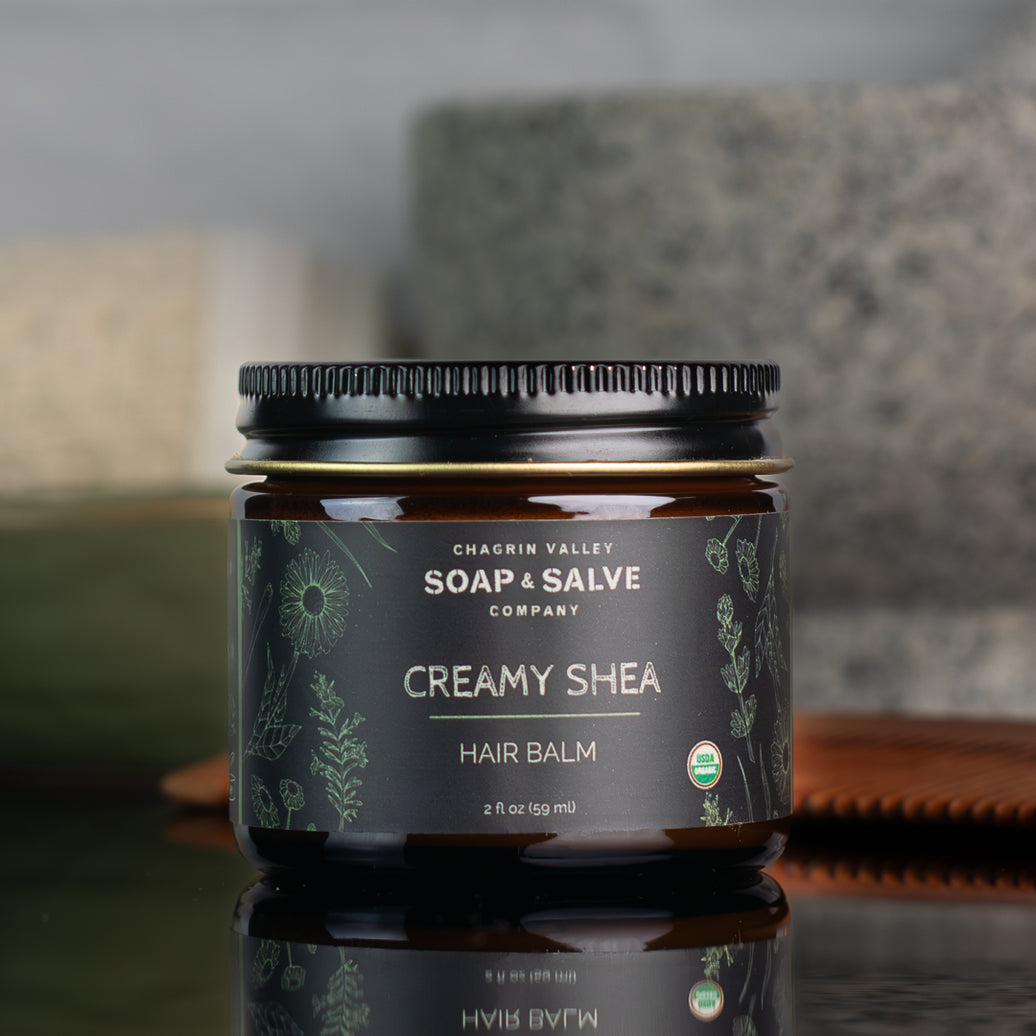
Un bálsamo orgánico para el cabello elaborado con manteca de karité virgen, ideal para cabello seco, grueso o encrespado, puede ayudar a revitalizar el cabello dañado, opaco o demasiado procesado.






Good For: Coarsely Textured Hair, Tightly Coiled Curly Hair, Dry and Over-processed Hair
Hair butter balms are very versatile products that can be used as pre-wash conditioners, in-shower conditioners, intense conditioners, and leave-in conditioners.
Creamy Shea, our richest hair balm, conditions and moisturizes:
Thicker in consistency than hair oil, a natural plant-based hair butter is an excellent product for styling, freshening a hair style, or repairing damaged hair.
Virgin Shea Butter provides deep nourishment for the hair shaft, lessens frizz, reduces dryness, and can help prevent ends from splitting and weak hair from breaking.
Rich in antioxidants, minerals, and vitamins, it can help moisturize and revitalize damaged, dull and over-processed hair resulting in improved luster and manageability. Shea butter also helps ease irritated scalp conditions.
Shea butter is great conditioning and styling ingredients for people with medium-to-coarse hair that is prone to frizz and dryness. If tightly coiled curly hair is your natural hair type, a shea butter cream is the perfect addition to your hair care routine. Read our Shea Butter Tutorial
Babassu oil nourishes, moisturizes, and restores hair strength, giving you shiny, healthy-looking hair. It can add volume to dry, flat hair without weighing it down. Since it is absorbed quickly it does not leave a greasy film. Babassu is a great smoothing agent to deter flyaways.
Since the structure of Jojoba Oil closely resembles that of our own natural scalp oils, it is considered nature's most effective natural moisturizer. It improves the health of the scalp and hair, provides shine, promotes hair growth, and helps dry and weak hair that is prone to breakage and split ends. It is a great oil for dry, flaky scalp and irritated scalp conditions.
The most important thing about using a hair balm is to make sure it is distributed evenly. Sectioning your hair into layers, a top and bottom layer, can make distribution easier. The thicker or coarser your hair the more layers you may need.
To allow better absorption and maximize its hydrating effects, use hair butter on damp or moist hair.
When applying a hair butter, focus on areas that need extra TLC like the hair ends since they are far from the scalp and lack natural oils.
Use it as a pre-shampoo, deep conditioning treatment once or twice a week depending on your hair type. Your hair will become softer and easier to manage.
Tip: Any time you are leaving the butter balm on your hair, cover your hair with a shower cap. A shower cap keeps your head warm, preventing the butter drying out on your hair strands.
Method 1: After a shampoo and rinse, squeeze excess water out of your hair. Then apply the balm directly to your damp hair using the basic method above and let it sit for 10 minutes while you complete the rest of your shower. Rinse and towel dry.
Method 2 for a lighter weight application: After a shampoo and rinse, squeeze excess water out of your hair.
Use as a leave in conditioner after shampooing to help prevent split ends, calm frizz and flyaways and add a healthy shine. Place a small amount of balm in the palm of your hand, rub palms together and scrunch into damp hair ends or smooth from mid-length to the hair ends. Comb thoroughly to evenly distribute the butter. Do not wash. Style as usual.
Use as a pomade butter to touch up problem spots. Rub a tiny bit of hair butter in your palms, apply to clean, dry hair to smooth down coarse or wiry flyaway hair strands, giving hair a healthy sheen.
For most people it is recommended to avoid applying oils or butters to the scalp. So when using a hair butter begin at least about three inches from the scalp and work all the way to the ends.
Whether or not to oil your scalp seems to be up for debate. While many articles encourage applying oil directly to your scalp, others state that applying oil directly on your scalp may put you at higher risk for dandruff. But some people with dry hair also have a dry scalp. If you typically oil your scalp without any problems then continue to do what your hair and scalp like.
For Dry Scalp: Using your fingertips gently massage a small amount of hair balm into your scalp. The massaging action aids in the absorption. Leave on for at least 15 minutes and then wash and style as usual.
Learn more: Read "What is Your Hair Type?"


The goal is simple: to Harness the Power & Simplicity of Nature® to cleanse, soothe, heal, and protect your skin and hair!
Our unique formulas rely on moisturizing oils and butters, healing botanicals, and pure essential oils. We choose every ingredient with one end-result in mind….the BEST possible natural skin care for YOU!
 Organic Virgin Manteca de karité*
Organic Virgin Manteca de karité*
 Organic Aceite de babasú
Organic Aceite de babasú
 Organic Sweet Aceite de almendra
Organic Sweet Aceite de almendra
*Ingredient is Fair Trade Certified
Our Shea Butter is unrefined and has not been bleached or deodorized.
Pure unrefined shea butter has an earthy, nutty, smokey scent that ranges from mild to strong and can be quite pungent. Since our shea butter is a natural, unrefined product it retains its natural scent, color, and nutritional benefits. The scent and color of unrefined shea often vary from batch to batch.
Read our Shea Butter Tutorial which explains the various types of shea butter as well as why we believe that the benefits of unrefined shea butter far outweigh the cons of its smokey, pungent scent.
De joven, tenía el pelo lacio como un diamante y envidiaba a mis amigas con el pelo ondulado y rizado. ¡Pero esas amigas envidiaban mi pelo liso! Ya sea liso, ondulado, rizado, ensortijado o algo intermedio, tu pelo es precioso.
De la misma manera que comprender tu tipo de piel es importante para crear una rutina de cuidado de la piel eficaz, determinar tu tipo de cabello puede desempeñar un papel importante para ayudarte a alcanzar tus objetivos capilares.
El tipo de cabello se divide en cuatro categorías principales: liso (tipo 1), ondulado (tipo 2), rizado (tipo 3) y ensortijado (tipo 4). Estos cuatro tipos de cabello se clasifican en los subtipos A, B y C, lo que da lugar a un total de 12 categorías.

La mejor manera de determinar tu tipo de cabello es observarlo en su estado natural. Con solo observarlo, puedes reconocer algunas características obvias. La próxima vez que te laves el cabello, déjalo secar al aire sin usar productos de peinado ni productos capilares. Esto te ayudará a definir la forma o textura natural de tu cabello. Por ejemplo:
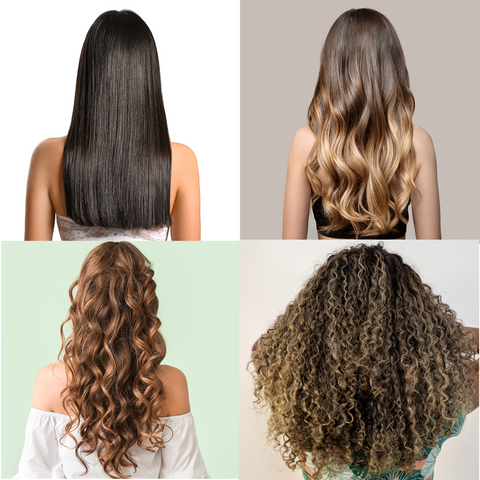
Es importante recordar que la mayoría de las personas no tienen un solo tipo de cabello. Suelen tener dos texturas diferentes en distintas partes de la cabeza.
Cada una de estas texturas de cabello requiere cuidados especiales para realzar sus mejores características naturales. Además, aunque dos personas compartan la misma onda natural, no significa que tengan exactamente el mismo tipo de cabello. ¡Eres única!
Las palabras "grueso" y "fino" pueden ser confusas, ya que puedes tener mucho cabello muy fino y viceversa.
La densidad es el grosor o diámetro de una hebra de cabello. Para determinar la densidad de tu cabello, usa una sola hebra y compárala con el tamaño de un hilo de coser común. El cabello fino es más delgado que el hilo, el cabello mediano tiene un grosor similar y el cabello grueso es más ancho. La densidad del cabello puede afectar su reacción a ciertos productos y su adherencia a diferentes peinados. Existen tres categorías básicas:
El cabello fino no se peina con facilidad. El cabello mediano es relativamente fácil de peinar y mantiene los rizos por más tiempo. Los mechones más gruesos son muy fáciles de rizar, pero al ser menos flexibles, pueden ser difíciles de peinar o de mantener su forma.
El grosor total se refiere a la cantidad total de cabello en el cuero cabelludo, que puede variar de fino a grueso. ¿Cuánto cabello puedes recoger al hacer una coleta?
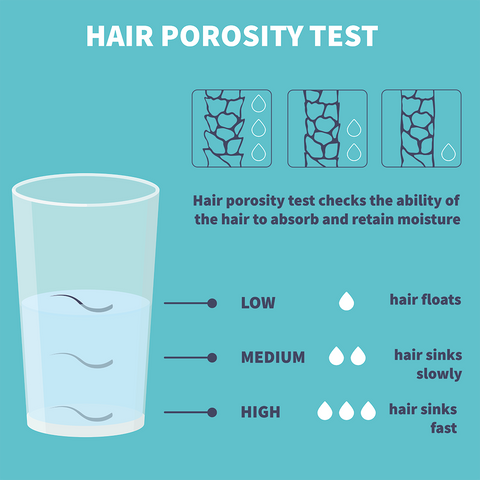 La porosidad se refiere a la capacidad del cabello para absorber la humedad y los productos capilares. Puedes determinar fácilmente la porosidad de tu cabello con un simple experimento.
La porosidad se refiere a la capacidad del cabello para absorber la humedad y los productos capilares. Puedes determinar fácilmente la porosidad de tu cabello con un simple experimento.
Parece que el cabello con alta porosidad se mantiene bien hidratado en todo momento, ya que absorbe la humedad con facilidad. Sin embargo, debido a las zonas de separación alrededor de la cutícula, el cabello también pierde humedad con mucha facilidad, lo que puede resultar en un cabello seco, quebradizo, con frizz y propenso a romperse.
Por otro lado, las cutículas aplanadas del cabello con baja porosidad impiden que la humedad se absorba en las fibras capilares. Dado que los productos para el cuidado capilar no se absorben fácilmente, la acumulación de producto en las fibras capilares suele ser un problema. Los productos para el cuidado capilar deben aplicarse con moderación mientras el cabello aún está húmedo para que se absorban y distribuyan mejor.
Para mantener tu cabello sano y nutrido, es importante desarrollar una rutina de cuidado capilar que incluya una hidratación adecuada. Conocer tu tipo de cabello es crucial, ya que te ayuda a elegir los productos adecuados para cabello liso, ondulado, rizado o crespo.
La bondad saludable de nuestro jabón artesanal está disponible para tu cabello.
Las barras de champú son un champú acondicionador totalmente natural en formato sólido. Sí, es champú de verdad en una barra sólida. Las barras de champú no son una novedad.
Se usaban comúnmente antes de que se inventaran los champús y acondicionadores detergentes líquidos en la década de 1940.
Aunque el proceso para hacer una barra de champú es el mismo que para hacer jabón, nuestras "recetas" de barras de champú están especialmente formuladas con aceites vegetales naturales, mantecas, ingredientes botánicos y aceites esenciales que nutren el cabello y el cuero cabelludo.
Nuestras barras de champú no contienen fragancias artificiales, colorantes, conservantes, detergentes, alcohol, urea, formaldehído, lauril sulfato de sodio, DEA, propilenglicol ni ningún otro aditivo sintético para el cuidado del cabello.
Cada una de nuestras selecciones de champú sólido contiene una mezcla diferente de aceites vegetales naturales, aceites esenciales y aceites con infusión de hierbas. No hay dos recetas iguales.
¡Haga clic aquí para obtener ayuda para elegir una barra de champú totalmente natural!
¡Por favor lea "Todo sobre las barras de champú"!

La consideración más importante en cualquier negocio son sus clientes. El mundo actual, plagado de afirmaciones engañosas, publicidad engañosa y simple engaño, a menudo deja a los consumidores intentando descubrir la verdad sobre los productos personales y sus ingredientes.
Algunos de mis productos favoritos están elaborados con ingredientes que simplemente no cuentan con certificación orgánica. ¿Por qué? Actualmente no existen estándares para los ingredientes utilizados específicamente en la industria de productos de cuidado personal. La certificación orgánica de productos de cuidado personal se basa en los estándares de alimentos orgánicos establecidos por el Programa Nacional Orgánico del USDA.
Pero como somos una empresa orgánica certificada, estamos obligados a presentar documentación que acredite que incluso nuestros "ingredientes no orgánicos" se produjeron sin el uso de pesticidas tóxicos, organismos genéticamente modificados (OGM), lodos de depuradora o irradiación.

¿Por qué nos convertimos en una empresa orgánica certificada?
¿Qué significan todas las etiquetas orgánicas?







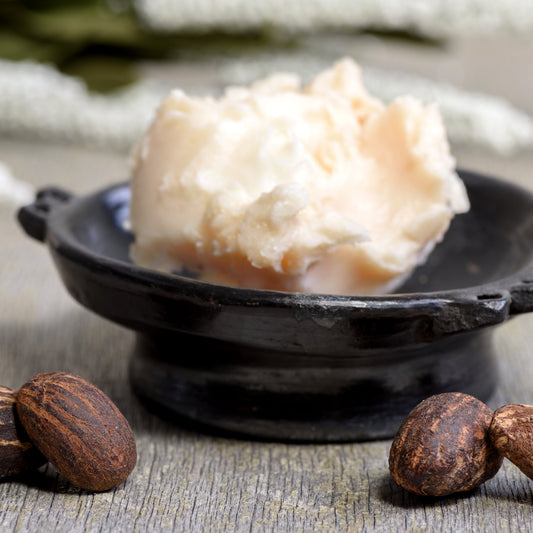
La manteca de karité se ha utilizado en todo el continente africano durante siglos. ¡Pero no todas las mantecas de karité son iguales! Descubramos por qué.
Read Post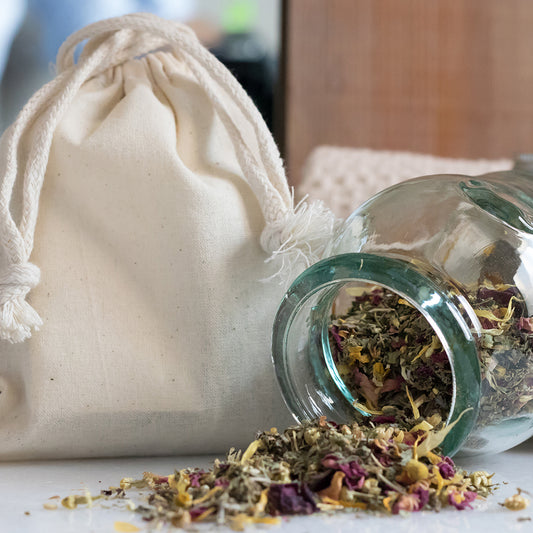
Las infusiones de hierbas se han utilizado durante siglos para suavizar naturalmente el cabello, enriquecer el color natural del cabello, calmar la irritación, prevenir la caspa, estimular el cuero cabelludo y restaurar el brillo, el cuerpo y el rebote.
Read Post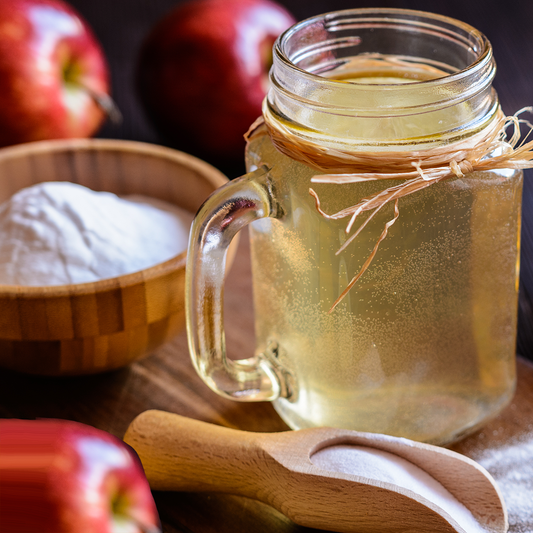
Pruebe estos remedios naturales para la acumulación de cabello y cuero cabelludo.
Read Post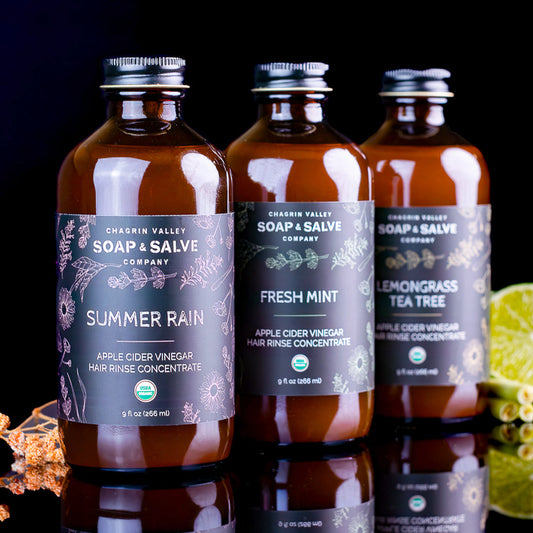
El vinagre de sidra de manzana es un excelente complemento para cualquier rutina de cuidado capilar. Descubre algunos consejos, preguntas frecuentes y recetas para usar los enjuagues de vinagre de sidra de manzana de Chagrin Valley.
Read Post